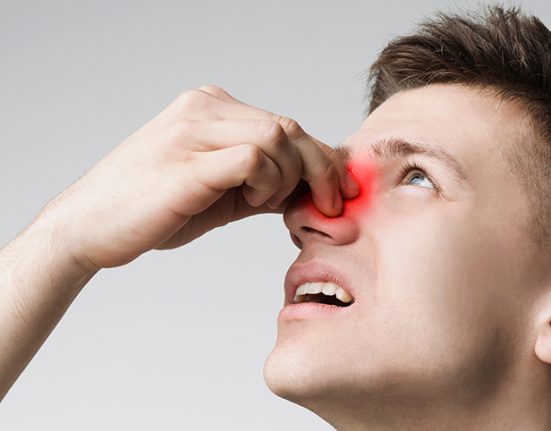Published on: 22nd March 2023
Medically reviewed by: General Practitioner at First Response Healthcare
Medically reviewed by: General Practitioner at First Response Healthcare

Most people experience headaches from time to time. However, people do not generally know the different types of headaches, the causes of headaches, or the right treatment for headaches. Knowing the different types of headaches and the causes of headaches can be useful in identifying the type of headache you have. This can then help you in taking the right steps for the treatment of headaches.
Table of Contents
- What Are The Common Types of Headaches?
- When Should You Seek Medical Assistance For Headache?
- Which Are The Most Common Primary Headaches?
- Which Are The Most Common Secondary Headaches?
- How Can You Diagnose The Type Of Headache?
- What Are The Home Remedies For Headaches?
- Treatment Of Headache At Home | First Response Healthcare
What Are The Common Types of Headaches?
Many of us are used to some form of headache pain that is throbbing, uncomfortable, and distracting. What most people don’t know is that there exist several different types of headaches. Identifying the type of headache you are suffering from will help you get better fast. The most common types of headaches that you should know about are as follows:
- Tension Headache
- Cluster Headache
- Migraine Headache
- Hemicrania Continua
- Ice Pick Headache
- Thunderclap Headache
- Allergy Or Sinus Headache
- Hormone Headache (also known as Menstrual Migraine)
- Caffeine Headache
- Exertion Headache
- Hypertension Headache
- Rebound Headache
- Post-Traumatic Headache
- Spinal Headache
When Should You Seek Medical Assistance For Headache?
It is important to know that in some cases, when you have a headache, you may need medical intervention immediately. You should seek immediate medical assistance and treatment for a headache if you experience any of the following symptoms along with your headache:
- Stiff Neck
- Rashes
- If you’re undergoing the worst headache you’ve ever had
- Vomiting
- Confusion
- Slurred Speech
- Fever of 100.4°f (38°c) or higher
- Paralysis in any part of your body
- Visual Loss
If your headaches aren’t too bad, you can learn how to identify your type of headache and what you can do to alleviate the symptoms.
Which Are The Most Common Types of Primary Headaches?
A primary headache is not a result or symptom of a disease or allergy. Primary headaches can be temporary or chronic. When occasional episodic headaches occur, they do not exceed more than 15 days a month. They can last from 30 minutes to several hours. Chronic headaches are more consistent. In a month, these can occur for more than 15 days. In cases of chronic headaches, treatment of headaches or a pain management plan is required. Below are different types of primary headaches:
Tension Headache
With a tension headache, you may feel a dull pain all over your head. You may also feel tenderness around the muscles of the neck, forehead, scalp, or shoulders. Anyone can get a tension headache. The cause of a tension headache is most often stress.
Cluster Headache
Cluster headaches are characterized by an intense burning and stabbing pain. This occurs around or behind one eye, or on one side of the face.
Symptoms of this type of headache include:
- Swelling, redness, flushing,
- Sweating on the side that caused the headache
- Headache on the same side with a stuffy nose and watery eyes.
These headaches are constant. A single headache can go on for 15 minutes to 3 hours. As soon as one migraine subsides, another migraine follows. A series of cluster headaches may occur daily for several months. The months between clusters are asymptomatic. Cluster headaches are most common in spring and autumn. These are also three times more common in men. Doctors have not identified the cause of cluster headaches yet.
Migraine
A migraine is a throbbing pain that starts at the base of the head. This pain can last for days. Migraine severely limits the ability to carry out daily activities. Migraine pain is throbbing and mostly unilateral. People with migraines also tend to be sensitive to light and sound. Nausea and vomiting are also common when you have a migraine.
Before a migraine starts, some people experience visual disturbances. Known as migraine aura, one may see:
- Flashing Light
- Twinkling Light
- Zigzag Line
- Blind Spot
- Auras can also include tingling on one side of the face or arm and difficulty speaking.
People with post-traumatic stress disorder (PTSD) are also at increased risk of migraines.
Some of the common triggers for triggers are environmental factors, such as:
- Sleep Disruption
- Dehydration
- Skipped Meals
- Certain Foods
- Hormone Fluctuations
- Exposure To Chemicals
Hemicrania Continua
Hemicrania Continua is a moderate headache on one side of the head that lasts for at least 3 months. Periods of increased intensity may occur several times a day.
Along with this type of headache, you may also experience:
- Tears Or Red Eyes
- Stuffy Or Runny Nose
- Drooping Eyelids
- Sweat On the Forehead
- Miosis
- Restlessness Or Agitation
Ice Pick Headache
Ice pick headache is characterized by short, severe pain in the head that lasts only a few seconds. These headaches can occur multiple times a day and can occur without warning. An ice-pick headache can feel like a series of one or more needles. Ice pick headaches usually travel to different parts of the head. If you have ice-pick headaches that always occur in the same place, it could be a symptom of an underlying medical condition.
Thunder Headache
A thunderclap headache is a very severe headache that begins quickly and reaches maximum intensity in less than a minute. It can be benign, but it can also be a symptom of a more serious condition that requires immediate medical attention.
In some cases, a thunderclap headache may be because of:
- Rupture, Rupture, Or Blockage Of Blood Vessels
- Stroke
- Brain Injury
- Reversible Cerebral Vasoconstriction Syndrome (RCVS)
- Vasculitis (Inflammation of Blood Vessels)
- Pituitary Apoplexy (Bleeding or Loss Of Blood From An Organ)
If you experience a thunderclap headache for the first time, see your doctor right away. If your doctor determines that your headache is not due to another medical condition, he or she can discuss treatment plans for future thunderclap headaches.
Which Are The Most Common Secondary Headaches?
Secondary headaches are symptoms of something else happening in the body. Continued secondary headache triggers can lead to chronic headaches. Treating the underlying cause generally helps relieve headaches.
Following are the types of secondary headaches along with the causes of headaches:
Allergies or Sinus Headaches
Headaches may occur as a result of an allergic reaction. The pain from these headaches is often concentrated in the sinus area and the front of the head. Migraines are often misdiagnosed as sinusitis. People with chronic seasonal allergies or sinusitis are prone to this type of headache.
Hormonal Headache
Women often suffer from headaches related to hormonal fluctuations. Menstrual periods, birth control pills, and pregnancy can all affect estrogen levels and cause headaches. Headaches specifically associated with the menstrual cycle are also known as menstrual migraines. These can occur just before, during, and after menstruation, and during ovulation.
Caffeine Headache
Caffeine affects blood flow to the brain. Frequent migraine sufferers are at risk of triggering headaches due to caffeine consumption. If you are accustomed to exposing your brain to a certain amount of caffeine, a stimulant, on a daily basis, not consuming caffeine can give you headaches. This may be because caffeine alters brain chemistry and withdrawal from caffeine can cause headaches.
Exertion Headache
Exertion headaches occur after a period of strenuous physical activity. Weightlifting, running, and sex are common causes of headaches. These activities are thought to lead to increased blood flow to the skull, which can cause throbbing headaches on both sides of the head. An exertion headache does not last long. This type of headache usually subsides within minutes to hours.
Hypertension Headache
High blood pressure can also be among the causes of headaches. This type of headache signals an emergency. It occurs when blood pressure becomes dangerously high. Hypertension headaches usually occur on both sides of the head and usually get worse with activity. If you have high BP and if you experience the following symptoms with a headache, you should see the doctor immediately:
- Changes In Vision
- Numbness Or Tingling
- Nosebleed
- Chest Pain
- Difficulty Breathing
Rebound Headache
A rebound headache, also known as a medication overuse headache, can feel like a dull tension-type headache or more intense, like a migraine. If you frequently use over-the-counter (OTC) pain relievers, you may be prone to this type of headache. Taking over-the-counter medications for more than 15 days in a month increases your chances of developing rebound headaches. These OTC drugs that cause this type of headache include:
- Paracetamol
- Ibuprofen
- Aspirin
- Naproxen
It is also common with drugs that contain caffeine.
Post-traumatic Headache
Post-traumatic headaches can occur after any type of head injury. These headaches feel like migraines or tension headaches. They usually last up to 6-12 months after the injury occurs. They can also become chronic.
Spinal Headache
Spinal headache is the result of decreased cerebrospinal fluid pressure after a spinal tap. For this reason, it is also called a post-dural puncture headache. You may experience headaches in the following parts:
- Forehead
- Temples
- Upper Neck
- Back Of The Head
- Studies estimate that spinal headaches follow a spinal tap 10-40% of the time. Onset usually begins within a few days but can begin months later.
Other symptoms of spinal headaches are:
- Nausea
- Neck Pain
- Dizziness
- Change In Vision
- Tinnitus
- Hearing Loss
- Radiating Pain In Arm
In most cases, the episodic headache disappears within 48 hours. However, you should seek medical attention if the headache lasts more than 2 days or increases in intensity.
If someone has headaches that last for more than 15 days in a month for 3 months, he/she may have chronic headaches. And in such cases, even if over-the-counter medications help control the pain, one should definitely see a doctor. Headaches can be symptoms of more serious health conditions, some of which require treatment beyond OTC medications and home remedies.
How Can You Diagnose The Type Of Headache?
Since there are many types of headaches, there are many methods you can use to diagnose and understand which type of headache you have. To receive effective inputs on the treatment of headaches, it is important to find out if you have a primary headache or a secondary headache. Diagnosing a headache begins with a physical exam and a thorough medical history. One of the steps that you can start with is to keep a ‘headache diary’ for a few weeks before seeing your doctor. You should record all details of the headaches, including:
- Length Of Time
- Intensity
- In Which Part of The Head
- Possible Triggers
Your doctor may refer you to a specialist, such as a neurologist depending on the type of headache. Diagnostic tests may be required to identify the underlying cause. These tests include MRI or CT scan, lumbar puncture, or blood test.
What Are The Home Remedies For Headaches?
Headaches have many causes, some more serious than others. Studies show that certain dietary and lifestyle factors can increase your risk of headaches. These include:
- Not getting enough sleep
- Dehydration
- Caffeine Withdrawal
- Alcohol Use
- Nutrient Deficiency
- Undereating
Following are some simple home remedies for a headache that might be useful. Most of the time, a simple headache tends to easily go away with the use of a good headache home remedy. If your headache persists for too long and if you are unaware of the causes of the headache, it is important that you see a doctor who will help you understand the type of headache and offer a plan for the treatment of the headache.
There exists various home remedies for headaches that you can easily use to your advantage. Let’s see some of these home remedies for headaches in detail:
- Drink Enough Water: Dehydration is a common cause of headaches, so drinking plenty of water and staying hydrated can help prevent headaches. Use this cost-effective home remedy and witness your headache disappear in minutes.
- Reduce Alcohol Consumption: Alcohol can cause migraines in about one-third of people who suffer from frequent headaches. Alcohol consumption is also a risk factor for tension-type and cluster headaches, one of the most serious types of headaches.
- Get Enough Sleep: Lack of sleep can harm your health in many ways, and even lead to headaches for some people. Research shows that poor sleep quality and insomnia are associated with headache frequency and severity.
- Use Essential Oils: Essential oils have many therapeutic benefits and although some can be ingested, they are most commonly used topically. If you have frequent headaches, try diffusing essential oils or mixing a small amount of essential oil (such as peppermint or lavender oil) with a carrier oil such as jojoba oil and rubbing it into your wrists and temples. This home remedy is sure to decrease your stress levels which are often associated with headaches.
- Take Vitamin B Complex: B vitamins are a group of water-soluble micronutrients that play many important roles in the body. For example, they contribute to the synthesis of neurotransmitters and help convert food into energy. Vitamin Group B also has a protective effect against headaches.
- Use Cold Compresses: Cold compresses can help relieve headaches. Cold or frozen compresses applied to the neck and head area reduce inflammation, slow nerve conduction, and constrict blood vessels, all of which help relieve headaches.
- Yoga: Practicing yoga is a great way to reduce stress, increase flexibility, reduce pain, and improve your overall quality of life. Including yoga can even reduce the intensity and frequency of headaches.
- Increase Physical Activity: One of the easiest ways to reduce the frequency and severity of headaches is physical activity. Many studies show that exercise can help significantly reduce the intensity, frequency, and duration of migraine headaches.
Treatment Of Headache At Home | First Response Healthcare
Talking to your doctor can be very helpful if you want to know the causes of headaches or if you want to identify your type of headache. With First Response Healthcare, you can consult a doctor online or have a doctor visit you for treatment of a headache wherever you want, at any time you want.
First Response Healthcare (FRH) is a JCI-accredited home healthcare company that provides Doctor on Call medical services, wherein our doctor can come to your home, hotel, or office for diagnosis or treatment of headache or any other ailment. FRH has received the Gold Seal of Approval from Joint Commission International for its high-quality services.
Our medical team is available 24/7 and can be booked at any time, including on weekends and holidays. Our team of doctors are DHA qualified, experienced, and internationally trained and they can provide proper medication and guidance for the treatment of headaches. Our team of doctors can treat a wide variety of illnesses and problems, including colds, flu, migraines, and chronic illnesses. Our doctors come from a variety of backgrounds and speak English, Arabic, Turkish, Urdu, Hindi, Punjabi, Pashto, Sindhi, and Russian. When necessary, our doctor can refer you to a specialist, physical therapist, or hospital.
To hire the services of a doctor at home for headaches or any other ailment, you can call on 0505050387 or 800DIALDOC. You can also book an appointment online by visiting https://firstresponsehealthcare.com/ae/dubai




